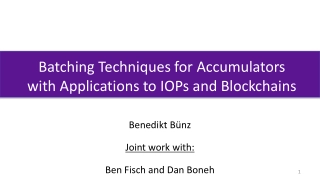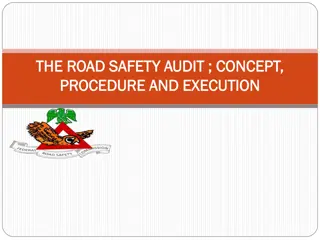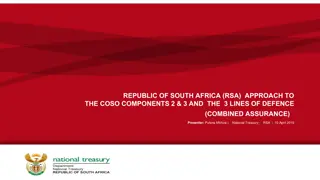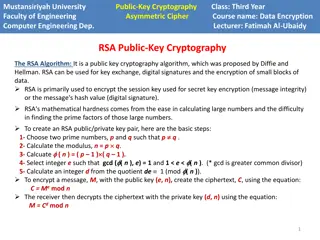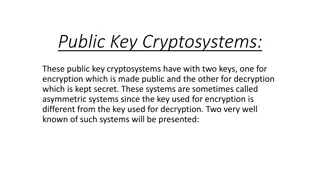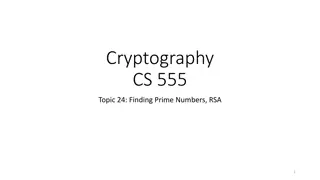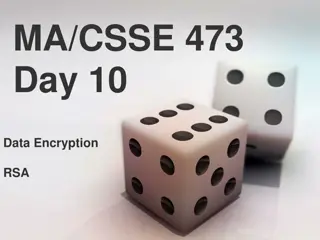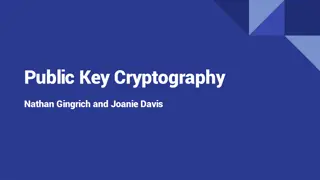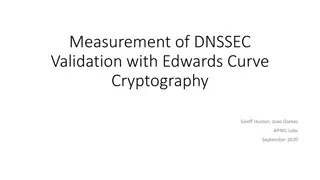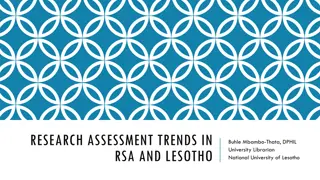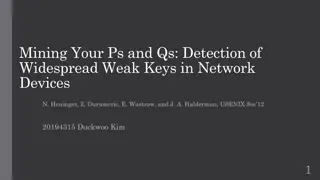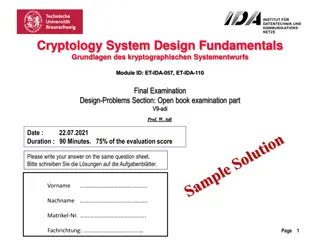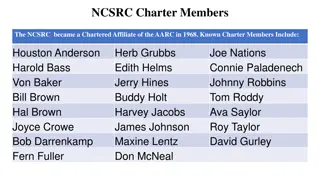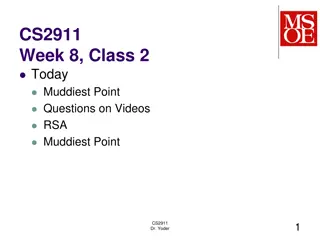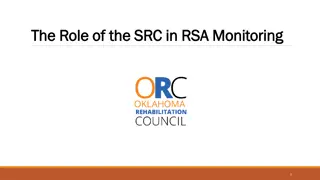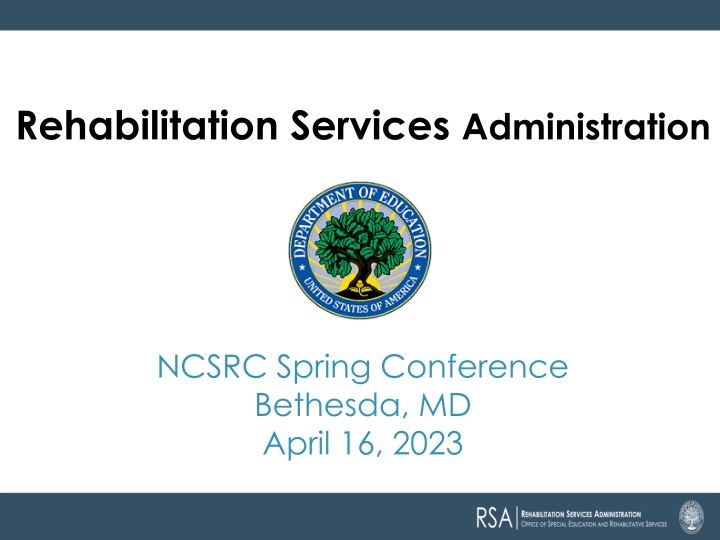
Key Insights from NCSRC Spring Conference on Rehabilitation Services Administration
Explore important topics discussed at the NCSRC Spring Conference for Rehabilitation Services Administration, including VR program data, WIOA performance accountability, and key terms. Learn about the RSA-911 case service report and the significance of WIOA performance indicators for measuring success in vocational rehabilitation programs.
Download Presentation

Please find below an Image/Link to download the presentation.
The content on the website is provided AS IS for your information and personal use only. It may not be sold, licensed, or shared on other websites without obtaining consent from the author. If you encounter any issues during the download, it is possible that the publisher has removed the file from their server.
You are allowed to download the files provided on this website for personal or commercial use, subject to the condition that they are used lawfully. All files are the property of their respective owners.
The content on the website is provided AS IS for your information and personal use only. It may not be sold, licensed, or shared on other websites without obtaining consent from the author.
E N D
Presentation Transcript
Rehabilitation Services Administration NCSRC Spring Conference Bethesda, MD April 16, 2023
Introductions Christopher Pope Chief, Data Collection and Analysis Unit: Rehabilitation Services Administration Jason Hunter Program Specialist, Technical Assistance Unit: Rehabilitation Services Administration
Presentation Overview Opening Remarks VR Program Data RSA-911 WIOA Performance Accountability Key Terms Performance Indicators and Data Other VR Program Measures Performance Questions for SRCs SRC Membership Q&A
Case Service Report (RSA-911) OMB-approved information collection for RSA to receive data related to characteristics of people served, services provided, and outcomes. All 78 VR agencies report quarterly through RSA website. Reports are due 45 days after quarter (e.g., PY22 Q3 report is due May 15, 2023)
WIOA Performance Accountability Section 116 of WIOA Joint Regulations at 34 CFR 361 Subpart E Joint Guidance: Performance (TAC 17-01) Supplemental Wage (TAC 17-04) Annual Reports (TAC 17-05) Data Validation (TAC 19-01) Negotiations and Sanctions (TAC 20-02)
WIOA Key Terms Reportable Individual Participant Exit and Post-Exit Program Year (PY) July 1 through June 30 WIOA Performance for VR Program began with PY 2017 Currently in PY 2022
WIOA Performance Indicators 1. Measurable Skill Gains (MSG) Rate 2. Credential Attainment Rate 3. Employment Rate 2nd Quarter After Exit 4. Median Earnings 2nd Quarter after Exit 5. Employment Rate 4th Quarter After Exit 6. Effectiveness in Serving Employers #1 through 5 measure State VR program #6 measures all WIOA Core Programs in State
Measurable Skill Gains The percentage of program participants who, during a program year, are in an education or training program that leads to a recognized postsecondary credential or employment and who are achieving measurable skill gains, defined as documented academic, technical, occupational, or other forms of progress, towards such a credential or employment.
5 Types of Measurable Skill Gains 1. Documented achievement of at least one educational functioning level of a participant who is receiving instruction below the postsecondary education level Documented attainment of a secondary school diploma or its recognized equivalent Secondary or postsecondary transcript or report card for a sufficient number of credit hours that shows a participant is meeting the State unit s academic standards Satisfactory or better progress report, towards established milestones, such as completion of OJT or completion of one year of an apprenticeship program or similar milestones, from an employer or training provider who is providing training Successful passage of an exam that is required for a particular occupation or progress in attaining technical or occupational skills as evidenced by trade-related benchmarks such as knowledge-based exams. 2. 3. 4. 5.
Measurable Skill Gains Rate Earned a Measurable Skill Gain (Numerator) Eligible for a Measurable Skill Gain (Denominator) MSG Rate 2017 43,496 206,142 21.1% 2018 53,970 230,641 23.4% 2019 80,988 257,924 31.4% 2020 88,462 204,300 43.3% 2021 87,812 204,081 43.0%
Measurable Skill Gains Rate: PY 2021 National: 43% Virginia 92.3% Wisconsin 56.4% New York 44.0% Tennessee 36.0% Oklahoma 75.1% Montana 55.7% Iowa 43.8% Texas 34.4% Missouri 74.4% Connecticut 55.2% Nevada 42.5% Kentucky 34.2% Mississippi 72.1% Nebraska 54.6% Maryland 42.4% California 32.2% North Dakota 69.5% Ohio 54.3% Washington 42.0% Hawaii 30.7% Illinois 67.8% Delaware 54.0% Rhode Island 41.5% Colorado 29.2% Alaska 66.5% Utah 52.6% Florida 40.6% North Carolina 29.0% Indiana 63.5% Alabama 51.9% Georgia 39.9% Oregon 24.8% New Hampshire 59.9% Maine 51.0% DC 39.8% Kansas 22.1% Arkansas 59.4% West Virginia 49.9% South Carolina 39.3% New Mexico 17.3% Idaho 58.3% Wyoming 48.9% Arizona 38.6% South Dakota 16.0% Vermont 57.3% Louisiana 47.2% Puerto Rico 38.2% New Jersey 11.5% Michigan 56.8% Minnesota 45.5% Massachusetts 36.5% Pennsylvania 11.3%
Credential Attainment The percentage of those participants enrolled in an education or training program (excluding those in OJT and customized training) who attain a recognized postsecondary credential or a secondary school diploma, or its recognized equivalent, during participation in or within one year after exiting from the program. A participant who has attained a secondary school diploma or its recognized equivalent is included in the percentage of participants who have attained a secondary school diploma or its recognized equivalent only if the participant also is employed or is enrolled in an education or training program leading to a recognized postsecondary credential within one year after exiting from the program
Credential Attainment Rate Attained a Credential (Numerator) Enrolled (Denominator) Credential Attainment Rate 2019 5,662 50,554 11.2% 2020 18,347 69,751 26.3% 2021 20,865 67,848 30.8%
Credential Attainment Rate PY 2021 National: 30.8% North Dakota 57.5% California 41.2% Mississippi 31.9% Arkansas 23.9% Virginia 56.3% Louisiana 41.0% Utah 31.8% Tennessee 22.6% Idaho 53.3% Delaware 40.3% Texas 31.0% Florida 20.8% Missouri 49.4% Michigan 38.5% Georgia 30.9% Arizona 20.7% Maine 48.1% Oregon 36.6% Montana 29.7% Massachusetts 19.6% Ohio 46.0% Alaska 35.9% New Jersey 29.6% DC 19.4% Iowa 45.9% Alabama 35.7% Colorado 29.0% Kentucky 18.5% Oklahoma 44.4% South Carolina 34.7% Illinois 28.6% Nevada 18.4% West Virginia 44.3% Indiana 34.5% North Carolina 26.5% Washington 16.9% New Hampshire 44.3% Wisconsin 34.5% Wyoming 26.4% Connecticut 16.7% Puerto Rico 44.0% Rhode Island 33.7% South Dakota 25.9% Kansas 15.1% Nebraska 43.1% Minnesota 33.1% Hawaii 25.0% Maryland 13.3% Vermont 42.5% New Mexico 32.9% New York 24.7% Pennsylvania 1.9%
Employment Rate: 2nd Quarter after Exit The percentage of participants in unsubsidized employment during the second quarter after exit from the program.
EmploymentRate Q2 Employed in Q2 (Q2 Numerator) Exited After IPE (Q2 Denominator) Employment Rate Q2 2018 147,768 293,190 50.40% 2019 144,938 282,530 51.30% 2020 132,884 286,175 46.40% 2021 123,952 236,099 52.50%
Employment Rate Q2 PY 2021 National: 52.5% New Hampshire West Virginia 69.9% 56.9% Oregon 53.0% Kansas 44.7% Michigan 65.1% Texas 56.2% Wyoming 52.6% Rhode Island 44.6% Idaho 63.1% Indiana 56.0% Connecticut 52.3% Arizona 44.4% Nebraska 61.6% Arkansas 55.5% Colorado 52.1% Maine 44.3% Missouri 61.5% Mississippi 55.3% Tennessee 51.9% Kentucky 43.6% Pennsylvania 61.4% Virginia 55.1% Oklahoma 50.8% Maryland 42.4% South Carolina 60.4% Minnesota 54.1% Alaska 49.9% Georgia 42.2% Alabama 59.8% Wisconsin 54.0% New Jersey 49.2% New Mexico 39.3% North Dakota 59.6% Nevada 53.6% California 48.6% Washington 37.9% Iowa 59.3% Florida 53.5% Massachusetts 47.9% Hawaii 34.7% Ohio 58.1% Vermont 53.3% Delaware 46.1% DC 32.2% South Dakota 57.8% Utah 53.2% New York 45.0% Puerto Rico 30.3% Illinois 57.2% Louisiana 53.1% North Carolina 44.9% Montana 23.7%
Median Earnings: 2nd Quarter after Exit The median earnings of participants who are in unsubsidized employment during the second quarter after exit from the program
Median Earnings Q2 Median Earnings Q2 2018 $3,875 2019 $4,005 2020 $4,022 2021 $4,776
Median Earnings Q2 PY 2021 National: $4,776 $5,210 Michigan $7,338 South Carolina Utah $4,569 Hawaii $4,105 Connecticut $6,695 Colorado $5,205 Idaho $4,523 Rhode Island $4,058 Mississippi $6,579 New York $5,204 Iowa $4,509 Illinois $3,997 California $6,317 New Mexico $5,182 Florida $4,454 Minnesota $3,809 West Virginia $6,308 Nevada $5,167 Oregon $4,443 Virginia $3,793 New Jersey $6,210 Pennsylvania $5,161 Missouri $4,384 Georgia $3,677 Kentucky $6,046 New Hampshire $5,100 Arizona $4,352 North Carolina $3,529 Texas $5,983 North Dakota $5,070 Puerto Rico $4,320 Washington $3,493 Arkansas $5,635 Maine $5,022 Alabama $4,291 South Dakota $3,492 Montana $5,520 Oklahoma $4,923 Delaware $4,278 Indiana $3,448 Massachusetts $5,499 DC $4,800 Maryland $4,273 Wisconsin $3,302 Alaska $5,439 Wyoming $4,677 Tennessee $4,200 Ohio $3,262 Vermont $5,213 Louisiana $4,634 Nebraska $4,180 Kansas $3,105
Employment Rate: 4th Quarter after Exit The percentage of participants in unsubsidized employment during the fourth quarter after exit from the program.
EmploymentRate Q4 PY 2021 Employed in Q4 (Q4 Numerator) Exited After IPE (Q4 Denominator) Employment Rate Q4 2019 129,692 297,459 43.6% 2020 128,530 308,011 41.7% 2021 112,284 234,055 48.0%
Employment Rate Q4 PY 2021 National Rate: 48.0% West Virginia 67.9% Mississippi 52.3% California 48.8% Maine 40.4% Nebraska 58.6% Vermont 52.0% Wyoming 48.7% Puerto Rico 39.7% South Carolina 58.0% Connecticut 51.8% Nevada 48.2% Kansas 39.4% Alabama 58.0% Indiana 51.4% Alaska 46.3% Rhode Island 37.4% Idaho 57.2% Massachusetts 51.2% Louisiana 46.3% New Mexico 36.4% Michigan 56.5% Florida 50.3% South Dakota 45.9% Delaware 35.1% Missouri 55.9% Minnesota 50.3% New York 45.2% Hawaii 34.0% North Dakota 55.8% Wisconsin 50.1% Tennessee 45.0% Pennsylvania 32.9% Iowa 55.5% Colorado 49.8% New Jersey 43.9% Washington 32.8% Ohio 55.0% Arkansas 49.6% Georgia 42.4% North Carolina 32.5% Texas 54.6% Oregon 49.6% Illinois 42.2% Maryland 31.3% New Hampshire 53.5% Utah 49.5% Arizona 41.7% DC 27.2% Virginia 52.7% Oklahoma 49.3% Kentucky 40.9% Montana 14.6%
Effectiveness in Serving Employers During the pilot, there have been three approaches for measuring Effectiveness in Serving Employers. The core programs must select two of these three approaches to report on this indicator. They may also establish and report on a third State-specific approach in addition to the two approaches selected: 1. Retention with the Same Employer 2. Repeat Business Customers 3. Employer Penetration Rate Currently, this indicator is in Rulemaking.
Trends in Pre-Employment Transition Services Number of SWD Reported Number of SWD Received a Pre-ETS Total Pre-ETS Provided 1,555,903 1,349,877 1,227,841 1,171,303 747,837 682,237 663,901 638,601 622,498 525,958 250,784 248,336 247,926 203,638 179,716 PY 2017 PY 2018 PY 2019 PY 2020 PY 2021
WIOA Performance Indicator Resources VRTAC-QM: Resources VRTAC-QM: WIOA Performance Accountability System RSA Performance Website RehabData Workgroup Website
Other VR Program Measures Timeliness and Responsiveness Rates of Attrition Service Provision Quality of Employment Outcomes Wages and Hours Worked Benefits Career Pathways and Career-Focused Customer Satisfaction
SRCs and Performance Data RSA s Data Dashboards (quarterly) VR Agency Monitoring Reports Data Tables Service Record Review Results Eligibility/IPE Timeliness Data WIOA Annual Reports
Performance Questions for SRCs How many individuals are being served at all levels (referrals, applicants, participants)? How many VR Counselors? How many non-client- facing staff? If operating under OOS, what is the status of the wait list? How many individuals are in each category? How quickly are applicants being determined eligible? Are IPEs being developed on time? Where is attrition occurring?
Performance Questions for SRCs For what and to whom are funds being used/authorized? How many participants receiving SE? How many participants are supported in college or university? How many participants in other credential- based programs? How many MSGs and Credentials?
Performance Questions for SRCs How are you measuring the effectiveness of pre-employment transition services? What does co-enrollment look like? What are the top five SOC codes? What are median wages and hours worked per week? What are rates of employment post-exit? Are participants returning for help?
SRC Membership On April 13, 2023, RSA reissued Technical Assistance Circular (TAC) 23-02. The information in this TAC is presented in a series of frequently asked questions by VR agencies and SRCs. TAC 23-02 reissues the guidance from TAC 12-01, addresses a technical change related to the membership of the representative of the American Indian Vocational Rehabilitation Services projects, and clarifies the appointment of and term limits for the director of VR agencies (see Questions 3, 5, and 12).
Follow up on SRC Info Request 2019 1. How can RSA support you so that you can better perform your roles? 2. How can we improve our communication with you? 3. How can RSA improve the performance of the VR program under WIOA? 4. How can RSA improve the monitoring of the VR program, including the involvement of SRCs, CAPs, and other stakeholders in the process?
RSA Contact Information RSA State Liaisons RSA s SRC Resources RSA s Data Collection and Analysis Unit

